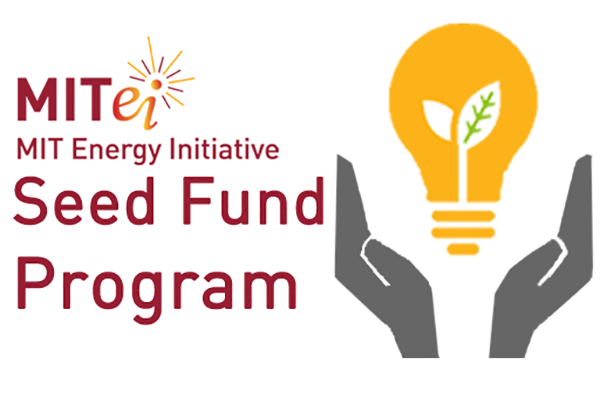
The MIT Energy Initiative’s third round of seed grants for energy research will support innovative work on solar power, nuclear power, fuel cells, biofuels, and more. Several projects are inspired by natural systems, among them geckos’ feet and bacterial antennas.
Total funding in this round of seed grants exceeded $1.5 million. Thirteen projects received grants ranging from $60,000 to $150,000 and lasting from one to two years, while two additional projects were awarded smaller, shorter-term “planning grants.”
This year’s proposals were as strong as ever, according to MITEI Director Ernest Moniz. “We were especially pleased to see that more than half the awards in this round went to junior faculty,” said Moniz. “And as in the previous rounds, many of the awardees are new to energy-related research.”
A few examples will demonstrate the creativity and diversity of the funded research. In one project, Sangbae Kim, who joins the mechanical engineering faculty in May 2009, aims to develop remote-controlled robots that can perform monitoring and maintenance of deep-sea oil pipes and drilling facilities—tasks critical for safe and environmentally appropriate operation. The robot must walk along underwater pipes for inspection and then stop to perform maintenance, so the researchers are designing a foot inspired by the remarkable adhesion system that enables geckos to adhere to and traverse all kinds of surfaces.
In another biology-related project, Professors William Green and Kristala Jones Prather of chemical engineering are using computational and experimental methods to identify biofuel molecules that promise significant performance advantages in engines over conventional fossil fuels and can be made in high yields using metabolic engineering.
Professor Alfredo Alexander-Katz of materials science and engineering is also looking to nature for help in designing high-performance photovoltaic devices. His work focuses on the light-harvesting antennas of photosynthetic green bacteria, which have the ability to harvest essentially every photon that they encounter. Understanding how these natural systems self-assemble will help researchers design novel artificial systems that can harvest light with high efficiency.
Other solar-related projects focus on solar concentrators. For example, Professor Marc Baldo of electrical engineering and computer science is working to improve the “luminescent solar concentrator,” a device in which glass or plastic is coated with dyes that absorb light and then reemit it for collection by solar cells attached at the edges. Such devices work well with diffuse light but have weak absorption of sunlight in the infrared—a shortcoming that the researchers will address by incorporating rare earth ions into the glass or plastic substrate.
To speed the development of hydrogen fuel cells, Professor Sylvia Ceyer of chemistry is investigating alternatives to the commonly used platinum catalyst, which is expensive and readily poisoned by common fuel contaminants. One candidate is a novel, less-expensive alloy that may do the job of the platinum—catalyzing reactions that form water on the electrodes.
A project led by Professor Marilyne Andersen of architecture focuses on innovative window systems that can reduce the need for energy-consuming lighting, heating, and cooling but are rarely implemented, in part because predicting their performance in a given space is difficult. Andersen is developing new metrics that will generate realistic estimates of their energy-saving potential as well as other benefits such as visual and thermal comfort, health, and productivity.
Funding for the new grants comes from MITEI’s Founding and Sustaining members supplemented by funding from the Chesonis Family Foundation, other private donors, and MITEI.
To date, MITEI’s seed fund program has supported more than 50 early-stage research proposals plus ignition and planning grants. “We expect to see high-impact results from this program over the next several years, providing the foundation for future major MIT energy research efforts,” said Robert Armstrong, deputy director of MITEI.
Seed grants
Supramolecular self-assembly of photosynthetic materials: towards design principles for more efficient light harvesting systems
Alfredo Alexander-Katz (Materials Science and Engineering)
Assessment of the energy savings potential of leading edge façade technologies with new performance metrics
Marilyne Andersen (Architecture)
Neodymium for infrared luminescent solar concentrators
Marc Baldo (Electrical Engineering and Computer Science)
Understanding the effect of nano-scale surface structures on bubble nucleation and boiling heat transfer
Jacopo Buongiorno (Nuclear Science and Engineering) and Karl Berggren (Electrical Engineering and Computer Science)
Investigation of an inexpensive surface alloy catalyst for hydrogen fuel cells and the role of a novel excited proton in the oxidation reduction reaction
Sylvia Ceyer (Chemistry)
Design of novel biofuels: biosynthesis and predicted fuel performance
William Green and Kristala Jones Prather (Chemical Engineering)
Bio-inspired underwater adhesion system for deep-sea oil mining
Sangbae Kim (Mechanical Engineering)
Electrocatalytic carbon dioxide reduction using intramolecular secondary interactions
Jonas Peters (Chemistry)
MIT Enernet: matching horsepower with brainpower
Carlo Ratti (Urban Studies and Planning), Neil Gershenfeld (Media Arts and Sciences), and Harvey Michaels (Urban Studies and Planning)
Heterostructured oxides for energy storage
Caroline Ross (Materials Science and Engineering) and Yang Shao-Horn (Mechanical Engineering)
Optimization of coherent energy transfer in photosynthetic systems
Robert Silbey and Jianshu Cao (Chemistry)
Nanoengineered surfaces for enhanced phase-change heat transfer for applications in energy and desalination systems
Kripa Varanasi (Mechanical Engineering)
Planning grants
SOFT CITIES: design of thin-film solar textile systems for the sustainable retrofit of dense urban fabric
Sheila Kennedy (Architecture)
Integrated modeling for sustainable metropolitan mobility
P. Christopher Zegras (Urban Studies and Planning), Moshe Ben-Akiva (Civil and Environmental Engineering), and Carlo Ratti (Urban Studies and Planning)
Press inquiries: miteimedia@mit.edu